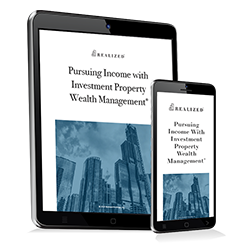
As investors approach retirement, their portfolio asset allocation changes. This change is due to a decrease in volatile assets. Older investors decrease portfolio volatility because they soon will start taking distributions. Taking distributions from a volatile portfolio can negatively impact investment principal and, thus, retirement income.
This article explores how an investor's asset allocation changes as they approach retirement. We'll also look at what goes into a portfolio as it shifts from higher to lower volatility (and returns).
Asset Allocation By Age
Young investors have decades before they’ll retire. This means they don’t have to worry about market fluctuations, and their income comes from working. It’s a different picture for those approaching and in retirement. Retirees largely depend on their portfolios for income.
There are many ways to divide age groups when determining asset allocation. Or, you can use an age-based formula to determine the bond allocation, which is what we’ll be doing.
One common formula is age minus 20. For example, a 25-year-old investor would be 25-20=5% bonds. This means that 5% of the investor's portfolio is allocated to bonds and 95% to stocks. This should make sense because the investor has approximately 40-45 years until retirement.
Bonds for a 40-year-old investor would be 40-20=20%. Their allocation to bonds is 20%, and stocks is 80%. But a 60-year-old investor would be 60-20=40% bonds. This is the traditional 60/40 portfolio, which is 60% stocks and 40% bonds.
Another age-based formula is (age-40) x 2. This is a more aggressive stock allocation formula than the one above. An investor wouldn't begin allocating to bonds until they turn 40. For a 60-year-old investor, their bond allocation would be (60-40) x 2 = 40%. So you end up with the same 60/40 portfolio at 60 years old.
To compare these two formulas, here’s what allocations look like:
Age age-20 (age-40) x 2
25 95/5 100% stocks
35 85/15 100% stocks
45 75/25 90/10
55 65/35 70/30
65 55/45 50/50
You can see how the (age-40) x 2 formula tries to keep an investor heavily allocated to stocks for longer than the age-20 formula.
If you’re curious about the historical returns of these allocations, you can view them here and here.
The above allocations are broadly accepted, but they are not required. They are simply guidelines backed by historical data. High-risk investors may prefer 100% stocks until age 65. In contrast, another investor might go into all bonds by age 55. These investors forgo traditional allocations in favor of personal preference.
Another method investors use is target date funds. Those funds choose an allocation mix based on time until retirement. The investor keeps the fund throughout their life. The fund automatically and periodically updates its allocations to match the years until retirement. As the number of years to retirement decreases, so does the fund's risk (and returns).
Most financial firms offer target-date funds. You can view Vanguard's target date funds here.
Next, we’ll discuss what goes into a portfolio based on an investor’s age.
Investments by Age
With knowledge about how an investor should allocate a portfolio based on age or years until retirement, we can turn to the specific assets that make up those allocations.
An investor with many years until retirement may choose a 95/5 allocation mix. This means 95% stocks and 5% bonds. But which stocks and bonds should comprise that mix?
In some cases, the investor doesn’t need to choose. Many brokerages offer robo advisors that choose assets based on questionnaire answers. These questionnaires commonly determine an investor's risk tolerance, time to retirement, and retirement goals. From that information, the robo-advisor suggests an allocation mix and updates it periodically based on rebalancing and the investor’s years until retirement.
Some investors may prefer to build their allocation from scratch by picking individual stocks and bonds. That is a more complex/advanced option. An alternative is to choose a total stock market fund for the stock allocation and a total bond market fund for the bond allocation. There are a variety of funds and ETFs that can meet stock and bond allocations. A brokerage representative can help an investor choose appropriate assets based on what’s offered by the brokerage.
Some investors may choose to break up the allocations into more detail. Instead of a 95/5 allocation, they may choose a 90-5-5 allocation, where 90% stocks, 5% gold, and 5% bonds. As mentioned in the first section, the allocations are simply suggestions but have a long history of data behind them.
There isn't a "right" retirement asset allocation. It depends on the investor's risk profile and retirement goals. An investor may do fine by choosing whatever a robo-advisor suggests. Others may be more comfortable working with a real person (i.e., a financial advisor). They may also choose a financial advisor because their goals are more complex than a robo-advisor can handle.
This material is for general information and educational purposes only. Information is based on data gathered from what we believe are reliable sources. It is not guaranteed as to accuracy, does not purport to be complete and is not intended to be used as a primary basis for investment decisions.
This is a hypothetical example that is demonstrating some mathematical principles. It does not illustrate any investment products and does not show past or future performance of any specific investment. Investing involves risk, including the loss of principal.
A bonds yield, share price and total return change daily and are based on changes in interest rates, market conditions, economic and political news, and the quality and maturity of its investments. In general, bond prices fall when interest rates rise and vice versa. You could receive back less than you initially invested and, unless otherwise noted, there is no guarantee that you will receive any income.



